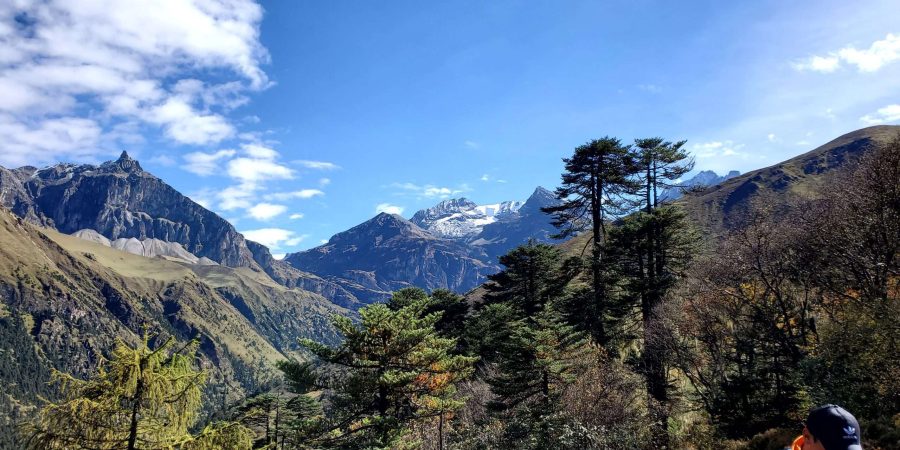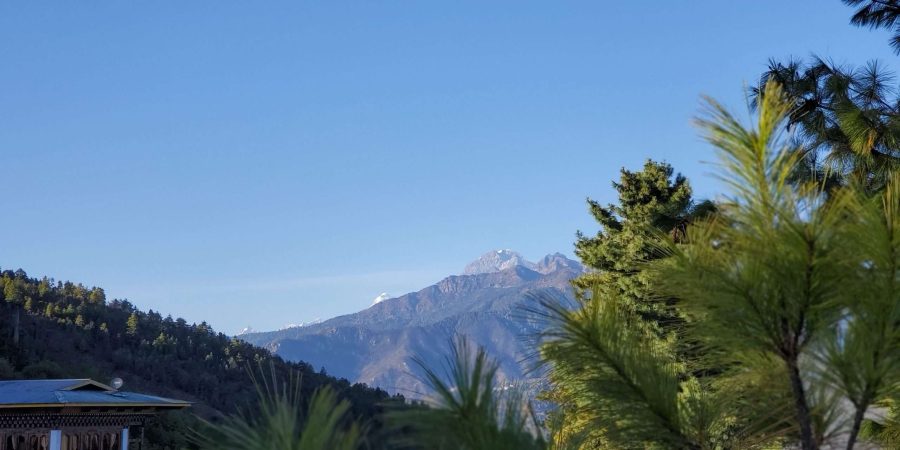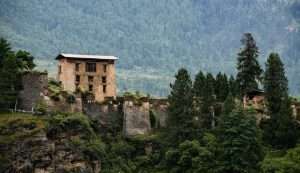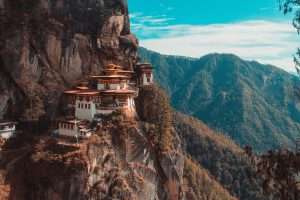Nestled in the heart of western Bhutan, Paro is a historic valley replete with towering peaks, ancient monasteries, and lush rice terraces. The crystal clear Paro River cuts through the valley, fed by glacial meltwaters from the towering Mount Jomolhari. Paro is home to over 155 temples and monasteries, including the iconic Tiger’s Nest which clings precariously to a cliffside overlooking the valley. The building dates back to 1692 and is one of Bhutan’s most sacred sites.
Paro is also known as the rice bowl of Bhutan thanks to its extensive emerald green rice paddies that line the hillsides. Red rice, known for its nutty flavor and hearty texture, is grown throughout the valley. The fertile land also supports apple orchards and small dairy farms with cows grazing on the verdant grasses. Paro town exudes traditional Bhutanese architecture with its array of carved wooden homes and shops illuminated by strands of bright prayer flags fluttering overhead. The Paro Festival held each spring displays the rich culture and traditions of the region with masked dancers, folk songs, and traditional sports. Whether exploring ancient monasteries, hiking to scenic outlooks, or simply absorbing the tranquil atmosphere, Paro offers a glimpse into Bhutan’s magnificent past and present.
Map
Interesting Facts
- Paro is home to the only international airport in Bhutan. The airport is considered one of the most dangerous in the world, as planes must navigate through a narrow valley surrounded by steep Himalayan mountain peaks.
- The famous takin – Bhutan’s national animal that looks like a cross between a cow and a goat – was first discovered in the Paro Valley in the 1500s by a famous saint named Drukpa Kunley.
- Paro is the agricultural center of Bhutan and is known as the country’s “rice bowl.” Red rice is the staple crop grown in Paro’s terraced fields due to the valley’s high levels of fertility.
- The Paro Tsechu festival held every spring commemorates the life of Padmasambhava, the saint who introduced Buddhism into Bhutan in the 8th century. It features sacred masked dances performed by monks.
- Paro contains the highest concentration of ancient temples and sacred sites in Bhutan, including the Tiger’s Nest Monastery which clings to a sheer cliffside over 900 meters above the valley floor.
- The Kyichu Lhakhang in Paro is one of the oldest temples in Bhutan, originally built in the 7th century by the Tibetan king Songsten Gampo. It is believed to pin down the left foot of a demoness.
- Paro is considered to have the purest water in all of Bhutan. Glacial meltwater from the snow-capped peaks surrounding the valley contribute to its crystal clear streams and rivers.






